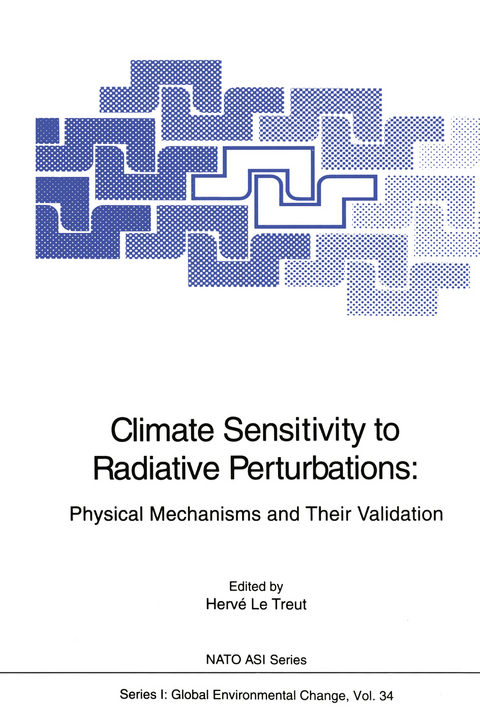
Climate Sensitivity to Radiative Perturbations
Springer Berlin (Verlag)
978-3-642-64673-7 (ISBN)
Current climate models diverge in their assessment of global warming that will result from the anthropogenic increase in trace gases. This is because they differ in their representation of the hydrological cycle (water vapour, clouds, snow and sea ice, soil moisture) and because a direct validation in terms of sensitivity is not possible. Indirect methods and approaches are therefore necessary to verify the models efficiently. The book provides an overview on different validation approaches. The use of satellite data is particularly stressed.
SECTION 1 General Issues and Methodologies.- AMIP Diagnostic Subproject on Cloud Forcing: Some Preliminary Findings.- Evaluation of Cloudiness in the Atmospheric Model Intercomparison Project.- Absorption of Solar Radiation by Clouds : Observations Versus Models.- Evaluation of the Spatio-Temporal Variability of Tropical Convection in GCMs by Using Geostationary Satellite Data.- The Importance and Nature of the Water Vapor Budget in Nature and Models.- Cause-and-Effect Analysis of Feedbacks in a Numerical Model.- Stochastic Models to Represent the Temporal Variability of Global Average Radiation Budget, Cloudiness and Temperature.- SECTION 2 Cloud and Water Vapour Feedbacks in Atmospheric Models.- Warm Pool Heat Budget as Simulated by Different Versions of the Echam Model.- GCM Implications for Mechanisms Determining Cloud and Water Vapor Feedbacks.- Comparison of Convection Parameterizations in an Atmospheric General Circulation Model.- Sensitivity of the Simulated Climate to Parameterization of Cloud Optical Properties in the MGO GCM.- The Role of Cloud-Radiative Interactions in the Sensitivity of the ECMWF Model Climate to Variations in Sea Surface Temperature.- Water Vapour and Cloud Feedback in the BMRC AGCM.- Cloud Feedbacks in the UKMO Unified Model.- Sensitivity Parameters of the Meteo-France Climate Models: Emeraude and Arpege.- Cloud-Radiative Feedback as Produced by Different Parameterizations of Cloud Emissivity in CCM2.- SECTION 3 Feedbacks in Coupled Ocean-Atmosphere Models.- Climate Sensitivity and Cloud-Albedo Feedback in a Global Coupled Ocean-Atmosphere GCM.- Cloud Effects on the Ocean Surface Energy Budget.- Feedback Processes in the GFDL R30-14 Level General Circulation Model.- Aerosol and Greenhouse Gases Forcing: Cloud Feedbacks Associated to the Climate Response.- Analysis of the Monsoon Response to Radiative Perturbations in GCM Simulations.- Large Scale Atmosphere-Ocean Interaction and Climate.- A 65-70 Year Oscillation in Observed Surface Temperatures.- Orographic Precipitation in the Southern Black Sea Coasts.- Index of contributors.- List of addresses.
| Erscheint lt. Verlag | 16.9.2011 |
|---|---|
| Reihe/Serie | Nato ASI Subseries I: |
| Zusatzinfo | IX, 331 p. |
| Verlagsort | Berlin |
| Sprache | englisch |
| Maße | 155 x 235 mm |
| Gewicht | 527 g |
| Themenwelt | Naturwissenschaften ► Geowissenschaften ► Geologie |
| Naturwissenschaften ► Geowissenschaften ► Meteorologie / Klimatologie | |
| Schlagworte | air pollution and air quality • atmosphärische Strahlung • atmospheric radiation • climatology • Cloud • Globale Erwärmung • global warming • Greenhouse Effect • Klima / Klimatologie • Klimatologie • Snow • Treibhauseffekt |
| ISBN-10 | 3-642-64673-5 / 3642646735 |
| ISBN-13 | 978-3-642-64673-7 / 9783642646737 |
| Zustand | Neuware |
| Haben Sie eine Frage zum Produkt? |
aus dem Bereich


